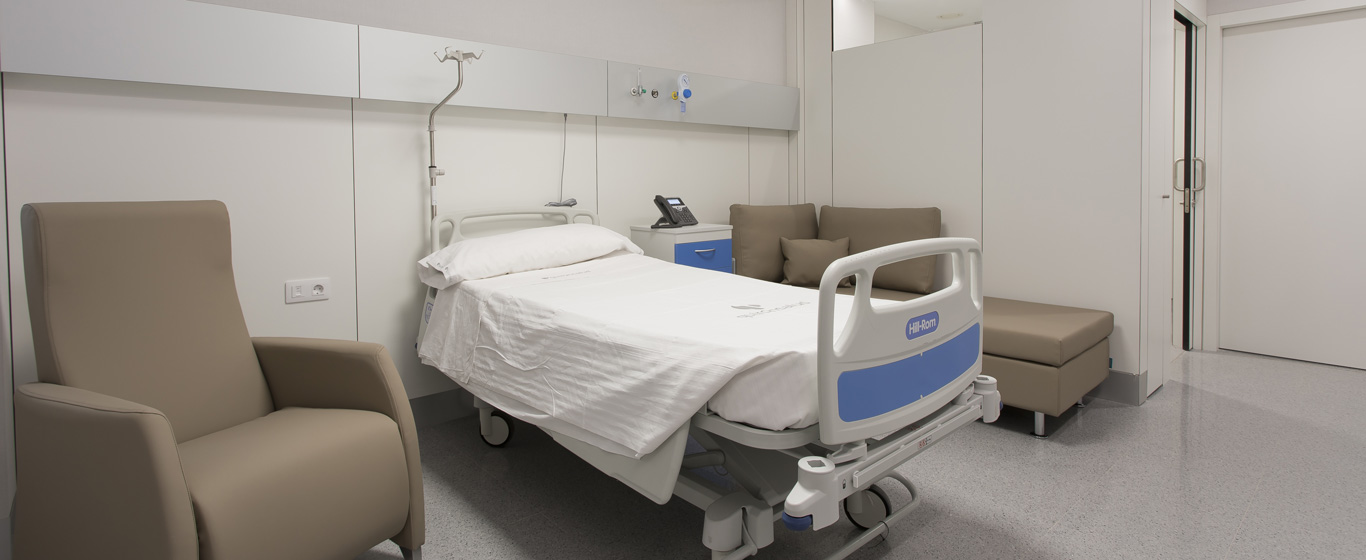Paracentesis
Paracentesis is a procedure performed to remove fluid from the abdominal cavity in order to detect the causes of its presence in the peritoneal space. It can serve as a diagnostic or therapeutic technique, as it is also used to eliminate abnormally accumulated fluids.
General Description
The peritoneal cavity contains a fluid that helps prevent friction between organs. Occasionally, this fluid accumulates abnormally (ascites) as a result of other conditions such as liver disease, pancreatic or liver cancer, tuberculosis, heart failure, or cirrhosis. Paracentesis is a technique that can be used for two different purposes:
- Diagnostic paracentesis: determines the causes of peritoneal fluid accumulation or the presence of infection in patients with ascites.
- Therapeutic paracentesis: drains (removes) excess fluid to alleviate symptoms of large-volume ascites, such as abdominal pressure or blood circulation disturbances.
In most cases, before performing paracentesis, imaging tests (CT scan or ultrasound) are carried out to assess the amount of accumulated fluid and its location.
When is it indicated?
Paracentesis is indicated in cases of undetermined ascites, to find the underlying cause. Additionally, it is a procedure used to check if the accumulated fluid is infected.
When the underlying pathology or disease has already been diagnosed, it is used to remove as much peritoneal fluid as possible to reduce pain, ease breathing, or relieve pressure on the kidneys or intestines.
Paracentesis is contraindicated in patients with intestinal obstruction, blood clotting disorders, or infection in the abdominal wall.
How is it performed?
Although it can be done in a doctor's office, hospital room, or emergency room, paracentesis is typically performed in a sterilized room to minimize risks.
The procedure is carried out with the patient lying on their back, and continuous monitoring of heart activity is performed using electrodes connected to an electrocardiogram. Paracentesis is divided into several phases:
- Ultrasound to determine the exact location of the puncture: A water-based gel is applied to facilitate image reception, and the probe is moved across the abdomen. Once the most suitable area is identified, it is marked, and the gel is removed.
- Local anesthesia to minimize discomfort, especially during the therapeutic procedure: The anesthesia is typically administered through an injection.
- The skin is disinfected, and a long, fine needle is inserted into the marked area to slowly reach the peritoneal fluid.
- In diagnostic paracentesis, 30 to 60 milliliters of fluid are collected with a syringe, and the needle is immediately removed to allow the skin to close without forming a scab.
- In therapeutic paracentesis, the interior of the needle is removed, and an aspiration pump is attached to the cannula. Fluid extraction continues until the fluid is removed intermittently.
The peritoneal fluid is analyzed in the laboratory, which includes:
- Observation: If the fluid is not transparent or slightly yellowish, it is often indicative of ascites.
- Cell count and culture: This determines if there is an infection and its type.
- Albumin gradient: The difference in the concentration of this liver-produced protein in the blood and in the extracted fluid helps determine the causes of ascites.
Risks
Paracentesis is generally not a risky procedure.
In rare cases, complications related to the procedure or the underlying condition causing ascites have been described: abdominal pain after the puncture, low blood pressure, intestinal puncture, intraperitoneal bleeding, intestinal perforation with peritonitis, hematoma in the abdominal wall, or persistence of fluid presence.
What to expect from paracentesis
Paracentesis is an outpatient procedure, and patients can resume their routine without the need for bed rest. After signing an informed consent form, a gown is provided to be worn during the procedure.
Once the patient is lying on the table, the abdomen is exposed, and the ultrasound gel is applied, which is usually cold. It is normal to feel slight pressure when the specialist moves the probe.
The injection for anesthesia may be painful but temporary and mild. Once it takes effect, the procedure is painless, and only pressure is felt during needle insertion. After the fluid is extracted, a bandage is applied to the puncture site. For therapeutic paracentesis, the patient remains at rest for a while before slowly getting up to avoid dizziness. The duration of the procedure depends on the amount of fluid extracted, typically ranging from 20 to 30 minutes.
Abdominal pain may be felt after the procedure. If the pain intensifies, pain relievers can be taken. It is not alarming if the bandage becomes wet with peritoneal fluid that leaks through the incision. It is advised to visit a medical center if the leakage persists for more than 24 hours or if a high fever (38°C) occurs after the procedure.
Specialties that request paracentesis
Paracentesis is a common procedure in general surgery, digestive system surgery, or internal medicine.
How to prepare
Patients taking anticoagulant medication must inform the specialist, as they may need to suspend the treatment temporarily.




































































































